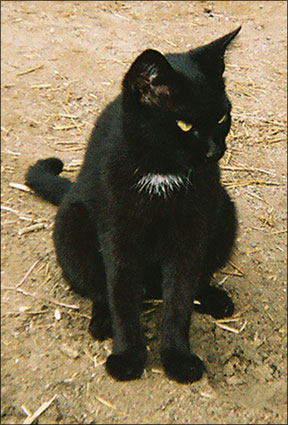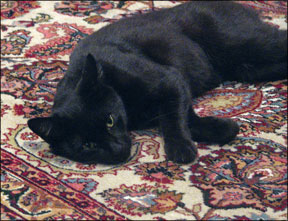Several years ago I came home to my first apartment and was greeted by my best friend, grinning from ear to ear. “Theres a surprise in your bathroom!” she exclaimed. That surprise turned out to be an adorable stray kitty from her hometown. “Nana” soon revealed herself to be an amazingly adaptive cat that was happy just basking in our love and attention, but the road to domestic bliss was Bev Caldwell 288 certainly not without its bumps. In hindsight, there were several steps we could have taken to make the transition a bit smoother. In fact, there are several potential problems when bringing an outdoor cat (e.g. a neighborhood stray or barn cat) indoors to live; however, if a new owner anticipates these problems – and addresses them accordingly – they can be greatly minimized.
According to ELise Christensen, DVM, a board-certified veterinary behaviorist at NYC Veterinary Specialists, the first and most important thing to do when adopting an outdoor cat is to have the cat evaluated by your veterinarian. “Stray cats (or any cat with an unknown history) should be strictly quarantined from resident cats until they have seen a veterinarian and been evaluated for infectious diseases, parasitic infestations and other illnesses,” explains Dr. Christensen. Resident cats are dependent on your discernment and protection; it is not wise to expose them unnecessarily to such highly communicable diseases as feline immunodeficiency virus (FIV) or feline leukemia virus (FeLV). In the case of introducing an outdoor cat to resident cats, it is always better to err on the side of caution.
The Best Way to Avoid Bad Behavior
The first veterinary visit is also a good time to discuss spaying or neutering. Dr. Christensen explains that, by addressing this from the get-go, you have a good chance of avoiding certain unwanted behaviors. “Stray cats should be spayed or neutered to decrease the chance of their reproducing and/or exhibiting objectionable behaviors like urine marking,” she states.
The second key to a smooth transition from outdoor living to indoor living is gradual integration. As the old adage says, slow and steady wins the race. Dr. Christensen explains further: “Until you know this cat very well, it is a good idea to keep him/her confined, especially when not supervised.” Make sure that the cat has access to litter, food, water, rest areas, scratching posts, etc. Not only does confinement help the cat to acclimate gradually to the new environment, but it can also help ensure the establishment of good litter habits. Dr. Christensen explains: “Most cats will naturally use unscented, clumping clay litter without specific training. But until a cat is very reliable and settled in at the new location, it is a

Bev Caldwell
288
good idea to only allow her out of the safe area when supervised. If possible, you can reward the cat with a small bit of food immediately as she leaves the box.”
Make Your Home Cat-Safe
This is also a good time to kitty-proof your home, if you havent already done so. A good rule of thumb is that, if its not toddler-safe, its not kitty-safe. Poisonous plants, pest poisons (like ant traps) and small choking hazards should be removed from any rooms that the cat has access to. Until the cat is settled in and settled down, it may be a good idea to pack up any special items that could be broken. Window-blind cords, phone cords and electrical wires (including computer cords) can pose a threat if the cat plays with or gets tangled in them; they should be securely anchored or placed out of reach.
Gradual Introduction to Other Pets
Introducing the cat to the rest of the household, including any resident cats, has the potential to create the most stress for everyone involved. Dr. Christensen advises, “If you have resident cats, they should be strictly separated from the potential addition to the family. Gradual integration is the best way to go. Keep the cats separated for several days; feed them on opposite sides of the door for a couple of weeks. If they do well, you can gradually allow them more and more exposure at mealtimes. Additionally, whether youre adding a new cat to an existing family with cats or this is a first cat, make sure to have plenty of litter boxes, food bowls, water bowls, toys and scratching posts available. You may also want to consider using feline facial pheromones to help decrease anxiety and the tendency to mark by urinating or scratching.”
Provide Physical and Mental Outlets
Last, but perhaps most important (next to the initial vet visit), is offering plenty of physical and mental stimulation. Dr. Christensen says, “If you will be moving an outside cat indoors, keep in mind that you will need to provide ample opportunities for scheduled, interactive and solitary play, puzzle-solving, food-searching, cat videos, etc.”
In addition, she recommends staying open to the possibility that the cat may not adjust to indoor life at all; some cats will always be more at home outdoors: “Even though being inside is safer and seems more comfortable to humans, some cats will inevitably prefer the stimulation that only the outdoors can provide.” But ideally, your time and patience will be rewarded, and your previously outdoor kitty will settle in comfortably with you in your home and leave you wondering what life was even like before he came along! v



